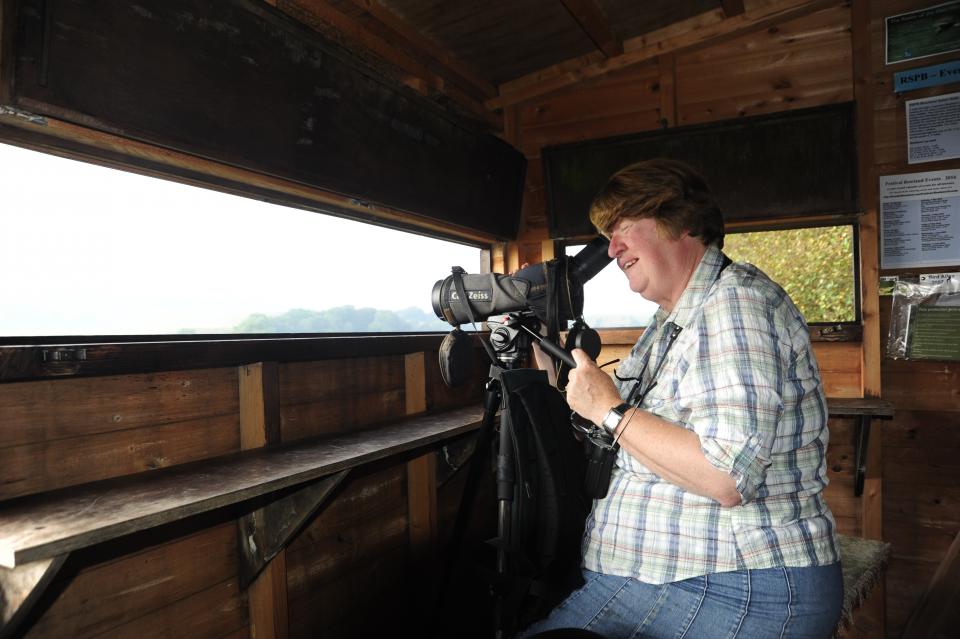
 Feature by Mark Sutcliffe - interview with Margaret Breaks
Feature by Mark Sutcliffe - interview with Margaret Breaks
Occupation: Farmer, conservationist and retired teacher
Lives in: Newton
Having recently retired from teaching, Margaret now has more time to devote to the family sheep farm and pursuing her passion for watching and recording Bowland’s birdlife
What sort of wildlife do you find in Bowland?
The wildlife in Bowland is as diverse as the landscapes. Just on the farm we have recorded over 120 species of birds, 13 damsel/dragon flies, 21 butterflies and 270 moths while around Stocks over 200 species of birds have been recorded so anything is possible.
How does the range of species change with the seasons?
At Stocks Reservoir, the seasons bring their own changes with winter seeing high numbers of water fowl, spring the excitement of migration, in summer the breeding birds are busy feeding their young while autumn sees the waders returning south and thousands of ducks, geese and winter thrushes passing through.
Spring is undoubtedly the best time of year on the farm as the breeding waders return, lapwing, curlew, snipe, redshank and oystercatcher are all present, and can be heard displaying at any time of day or night. The lapwings certainly like the scrapes we created for them with 19 chicks fledging from that area last year.
Red-breasted mergansers return and are often seen displaying in front of the hides while cuckoos can be heard calling across the reservoir and there is always the chance of a passing osprey.
During winter and spring both Roe and Sika deer become easier to see as they come out of hiding to feed at dawn and dusk. Winter is a good time to catch a glimpse of a hen harrier hunting over the moors as Scandinavian birds move south to avoid the Arctic winter.
Hundreds of teal, mallards, and wigeon are joined by pintail, tufted duck, goldeneye, pochard and goosander all in their smart breeding plumage. Late afternoons see thousands of common gulls coming into roost with over ten thousand black-headed gulls adding to the spectacle by early March.
 Where are the best places to find the rarer species?
Where are the best places to find the rarer species?
To increase the chances of seeing a hen harrier, join an RSPB Moorland Walk or keep your eyes open – especially in winter – as they can appear anywhere. Ring ouzels can be seen feeding in hillside fields during spring migration, while ospreys are only seen on passage through Bowland, with Stocks being the most reliable location. Autumn is the best time to see a merlin, as they move down from the high fells and hunt small birds over the moors.
How has the wildlife/biodiversity of the Forest changed over the years?
There have certainly been winners and losers mirroring the rest of the country. More ospreys are seen on passage as the number of birds breeding in Scotland increases. Nuthatches and collared doves are now common while little egret are seen quite regularly and flocks of over a hundred goldfinch can be seen feeding on roadside seeds. The plight of hen harriers and peregrines has to be a major concern.
What can visitors do to help conserve Bowland's wildlife?
Keep dogs on a lead during the breeding season as many birds nest on the ground whether in woodland or open country.
And the best view?
Newton Fell gate, overlooking the Hodder Valley.
* The wildlife hide at stocks is a short walk from the pay and display car park at School Lane. For details of RSPB Moorland Walks, see the events pages.
